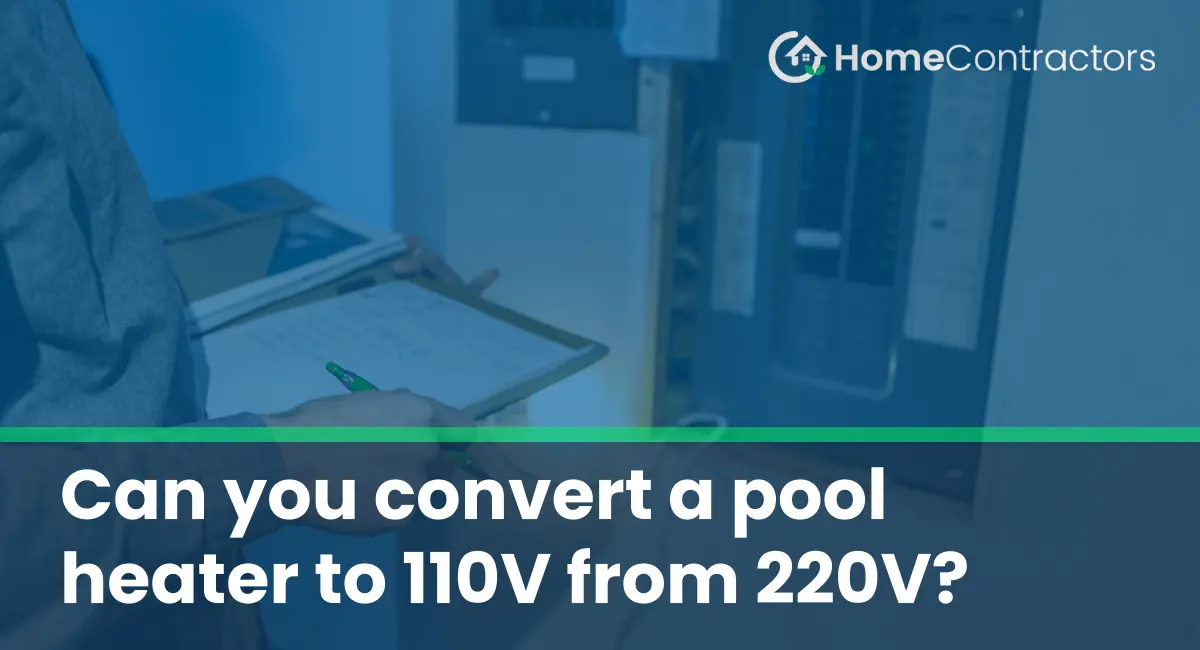In this article, we will explore whether it is possible to convert a pool heater to 110V from 220V and the considerations involved.
Understanding the Difference Between 110V and 220V:
Before delving into the conversion process, it is essential to understand the difference between 110V and 220V. Voltage, measured in volts (V), refers to the electrical pressure in an electrical circuit. In a 110V circuit, the current alternates between a positive and negative value 60 times per second, also known as 60 hertz (Hz). In contrast, a 220V circuit alternates between positive and negative 60 times per second as well, but the electrical pressure is doubled.
The Challenge of Converting a Pool Heater:
Converting a pool heater from 220V to 110V can be a complex process. The primary reason for this is that the electrical components within the pool heater, such as the heating element and control board, are designed specifically to operate at a certain voltage. Altering the voltage without making necessary modifications to these components could lead to damage or even pose a safety hazard.
1. Manufacturer Guidelines:
The first step in determining whether you can convert a pool heater from 220V to 110V is to consult the manufacturer’s guidelines and specifications. The manufacturer’s guidelines will provide insight into whether the heater is capable of operating at a lower voltage. In some cases, manufacturers may offer conversion kits or provide specific instructions for converting the heater. Following the manufacturer’s instructions is crucial to avoid voiding the warranty and ensuring the pool heater operates safely and efficiently.
2. Consult a Professional Electrician:
If the manufacturer’s guidelines indicate that conversion is possible, it is advisable to consult a professional electrician. Pool heaters contain complex electrical systems, and attempting to modify them without sufficient knowledge and experience can be dangerous. A professional electrician can assess the pool heater’s design, circuitry, and wiring to determine the feasibility of conversion, as well as provide guidance on the appropriate steps to follow.
3. Voltage Requirements and Component Replacement:
If it is determined that converting the pool heater to 110V is possible, the next step would be to evaluate the voltage requirements of the various components within the heater. It may be necessary to replace certain elements, such as the heating element or control board, with components compatible with a 110V system. It is crucial to source these replacement parts from reliable manufacturers or suppliers to ensure compatibility and safety.
4. Rewiring and Circuit Modifications:
Converting a pool heater from 220V to 110V typically requires rewiring and circuit modifications. This process often involves redistributing the electrical currents, replacing the wiring, and adjusting the circuit breaker and electrical panels to accommodate the lower voltage. Again, it is crucial to work with a professional electrician to ensure these modifications are carried out correctly and adhere to local electrical codes.
5. Safety Considerations:
During the conversion process, safety should be a primary concern. Always make sure to disconnect the power supply and follow appropriate safety procedures to prevent electrical shock or other accidents. It is strongly recommended to seek professional assistance to minimize risks and ensure a safe conversion.
Converting a pool heater from 220V to 110V is possible in certain cases, but it is a complex process that requires a thorough understanding of the electrical components and systems involved. Before attempting any conversion, always consult the manufacturer’s guidelines and specifications, as well as enlist the help of a professional electrician. Safety should be paramount, and any modifications made should comply with local electrical codes to ensure a safe and efficient operation of your pool heater.
